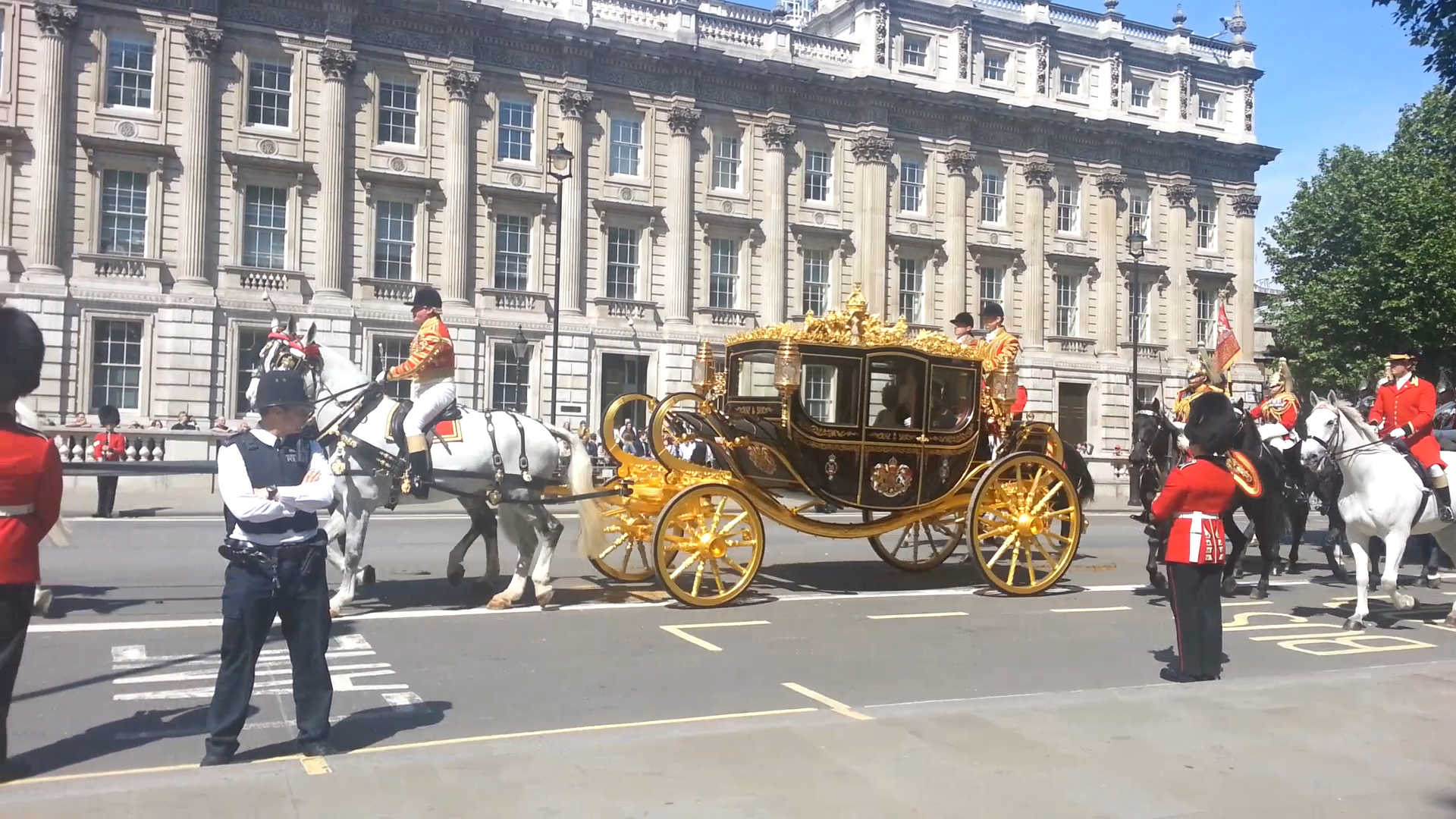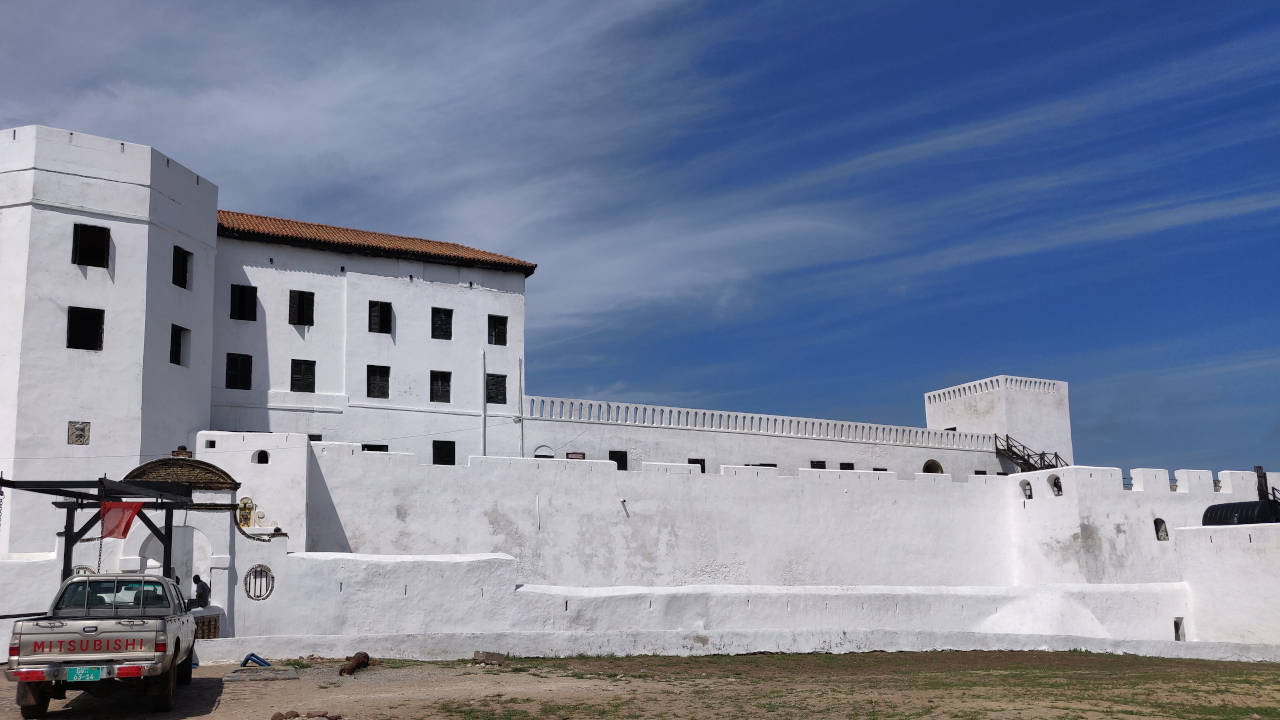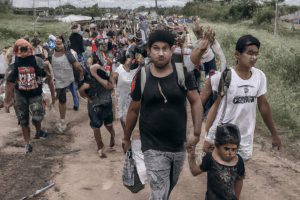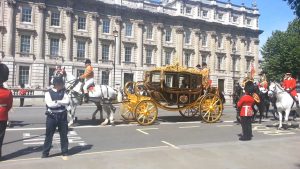
Who Pays For the World That Slavery Built?
The clip clop of the muscular, well groomed horses bearing men in armour and pulling the gold gilded coaches transporting Queen Elizabeth II to parliament in London speaks of the wealth and grandeur of empire built on land grabs, pirate loot, chattel slavery and indentureship. The show is also a big draw to today’s tourism.
By the end of the year 2019, a US$42-trillion dollar empire measured by gross domestic product (GDP) had spread over the Americas and Western Europe, the bulk based on enslavement of Africans and exploitation of the continent’s mineral and agricultural resources.
In the first half of 2020, the coronavirus pandemic and the murder of George Floyd by police in the United States, began reshaping history. The murder of Floyd, an Afro-American, came under a global microscope because with the lock-down of all major economies, people working from or otherwise forced to stay at home, had the time to review via video the callous choking death by a policeman.
The global anti-racist and pro human rights protests the killing triggered led to a revisiting of a century plus demand for compensation for those who suffered from the horrors and exploitation of slavery and, in more recent times, for their descendants who continue to live the burden of its aftereffects.
The event also came at a time when a few African states, notably Ghana, once a prime base of the trans-Atlantic slave trade from the 16th to the 19th centuries, have been reaching out to descendants of the former enslaved to make pilgrimages to and invest in Africa.
Repatriation and reparation became tenets of the Rastafari movement, born in Jamaica out of the Back to Africa doctrine of Marcus Garvey in the early 20th century and the coronation in 1930, of Ras Tafari Makonnen as Emperor Haile Selassie I, who the movement regards as its divine head.
Over the centuries there have been various repatriation and Africa settlement plans but no repayments. On the contrary, former slave holders were paid by Britain for their property lost in 1838 and Haiti lived under a burden of debt to France for its freedom for more than 200 years.
Caribbean governments, through the influence of the Rastafari movement that has gone on to be Jamaica’s and the region’s most notable contribution to world culture, have become in recent years the most vocal advocates for reparations for slavery from European nations who practised and benefited economically from it.
This is in contrast to the repression and ridicule the members of the movement had faced at home in its early years, and still to a large extent do, for their appearance with dreadlocks, doctrine of man as god and tenets of identification with and repatriation to Africa (Ethiopia). The latter was seen as anti-patriotic, particularly in the era since independence of the Caribbean territories starting in 1962.
The Caribbean Community (CARICOM) of 13 former British colonies, Suriname (Dutch) and Haiti (French) has established a Reparations Commission, headed by University of the West Indies Vice-Chancellor, Sir Hilary Beckles, that has been making incremental progress in getting apologies and promises of support from some United Kingdom universities and other institutions.
Over the centuries there have been various repatriation and Africa settlement plans but no repayments. On the contrary, former slave holders were paid by Britain for their property lost in 1838 and Haiti lived under a burden of debt to France for its freedom for more than 200 years.
The settlement colony, Liberia, was founded in the early 1800s by the American Colonization Society (ACS), who believed black people would face better chances for freedom and prosperity in Africa than in the United States. While some people voluntarily travelled to Liberia, many were only manumitted if they agreed to migration to what had been an area of Arab slave trade that took captives to north and east Africa.
In 1862 Liberia became the first African colony to gain independence, but conflict between natives and settlers continue in the 21st century to cause strife and economic retardation there.
In March 1792, the British set up Freeport in Sierra Leone, a former European slave trading port, to relocate black American loyalists, rebel Maroons from Jamaica and later, Africans rescued from slavers after the British had abolished the sea trade.
Life wasn’t much better than in the slave colonies and the Sierra Leone Company’s London controllers refused the settlers the right to own land. Many of the surviving Maroons, who were used to control unrest, chose to return to Jamaica in their old age.
Sierra Leone gained independence in 1961, and as in neighbouring Liberia, strife and hardships continue to haunt the struggling country.
Ethiopia’s involvement in offering land to Western blacks to settle in Africa was not directly related to slavery. During 1935-1941, the period of the Italian occupation of Ethiopia, the only African political entity not to have been colonized, there was great outpouring of support from American and other blacks for the Abyssinian cause.
The Emperor sent an emissary to New York to set up the Ethiopian World Federation (EWF) whose founding statement included the following preamble:
We the Black People of the World, in order to effect Unity, Solidarity, Liberty, Freedom and self-determination, to secure Justice and maintain the Integrity of Ethiopia, which is our divine heritage, do hereby establish and ordain this constitution for The Ethiopian World Federation, Incorporated.
The grateful Emperor in 1948 granted five Gashas (approximately 200 hectares) of land near Shashamane to the EWF for Ethiopian (African) people in the Diaspora who desired to return to the motherland. Eventually, most of the people who moved to Shashamane, were Jamaican Rastafari, who were not usually skilled as pioneer settlers.
After the deposition of the Emperor in 1974 by Marxist soldiers, most of the land was appropriated by the Derg military government in 1975. Many settlers left and currently a small number of Rastafarians remain.
Ghana’s Homecoming and Joseph plans
And so what of Ghana?
According to World bank figures referenced in this article, the GDP of 48 sub-Saharan African countries in 2019 was US$1.755 trillion. Compare that to the European Union’s of US$15.593 trillion for 27 countries, excluding the United Kingdom. The latter whose 2019 GDP was US$2.827 trillion, was about one-and-a-half times that of all Sub-Saharan Africa, including Nigeria and South Africa.
Ghana’s was US$66.984 billion or approximately $2,223 per capita (population about 29.77 million in 2018). Almost a third (30.5 per cent) of the population live on fewer than $3.20 a day.
Hover mouse or on mobiles tap the bars for actual figures.
The top three buyers of its oil, gold, cocoa, timber, tuna, bauxite, aluminum, manganese ore, diamonds and horticultural products are India 23.8 per cent, United Arab Emirates 13.4 per cent and China 10.8 per cent.
It buys most of its capital equipment, refined petroleum, foodstuffs from China 16.8 per cent, the United States 8 per cent and United Kingdom 6.2 per cent.
In this setting, it is understandable that Ghana would want to grow income sources and tourism and investment are attractive options. The Year of Return, Ghana 2019, was conceived as a means to capitalize on both through the African diasporas.
In September 2018, in Washington DC, Ghana’s President Nana Akufo-Addo formally launched the year in what the United Nations’ (UN) African Renewal magazine interpreted as “for Africans in the Diaspora, giving fresh impetus to the quest to unite Africans on the continent with their brothers and sisters in the diaspora”.
“We know of the extraordinary achievements and contributions they made to the lives of the Americans, and it is important that this symbolic year—400 years later—we commemorate their existence and their sacrifices,” Akufo-Addo said of the Diaspora.
“Together on both sides of the Atlantic, we’ll work to make sure that never again will we allow a handful of people with superior technology to walk into Africa, seize their people and sell them into slavery,” Akufo-Addo said. “That must be our resolution, that never again, never again!”
While the appeal went across well, there was one aspect with which some people have taken issue.
Amber Walker, an African-American media practitioner, while being supportive of the move, took issue with Mr. Akufo-Addo for appearing to downplay the actions of some Africans in the slave trade, telling the UN’s Africa Renewal magazine at the launch, “In the president’s statement, he sounds like the entire blame is placed on white people coming in with weapons and taking black people away, but that’s not necessarily the history. So I think that needs to be acknowledged,” she said.
A similar view was stated by an Antillean woman (she does not describe herself as Caribbean) who made the journey and was saddened by the commercialization that, in her, view downplayed the spirit of welcome and repentance that she had anticipated.
“Cape Coast Dungeon is one of 32 landmarks that are testament to Ghana’s support of the diabolic trade,” she wrote to Abeng News magazine. “Along with São Jorge da Mina Dungeon in Elmina (also known as Elmina or St George’s), Cape Coast Dungeon is one of the most revered and most visited by diasporan Afrikans. It was the main location that British captives were shipped from for the Antilles, England and America. Disturbingly, before visitors step out of a vehicle at Cape Coast Dungeon, there is an immediate swarming by street vendors. I eventually lost patience with a persistent vendor.
“When I come to this place, it is to remember the people that suffered and died here. It’s not a time to shop. I’m not interested in your bracelets whether or not you have my name on one just for me. [It is] extremely annoying.”
She wants to see more ownership of responsibility by Africans. “By blaming the trans-Atlantic slave trade solely on overpowering Europeans, Ghana does not have to take accountability for its actions in the heinous trade,” she said.
She noted that Dr. Darfour Adjei-Barwuah, Ghana’s ambassador to the U.S, helped launch the Year of Return, Ghana 2019 in Accra, with even more detachment to slavery than his president. She said Adjei-Barwuah was clear “…to establish the fact that the year of return as we are having it, is not supposed to emphasize the fact that Ghana used to be the biggest purveyor of human cargo 400 years ago.”
It’s hard to measure in dollar terms how much Ghana and Africa gained from the trade in humans. A life as commodity must differ in value from the potential earning a human could make if left to thrive in an uninhibited society.
How much Ghana made from the Year of Return has caused debate in that country after the tourism minister Barbara Oteng-Gyasi, announced income of $1.9-billion but which her deputy Dr Iddi Ziblim clarified as not “…that the ‘Year of Return’ alone has brought $1.9 billion [but] what the entire tourism sector has generated.”
“The Year of Return would probably be over 70 per cent to 80 per cent contribution to the tourism sector,” he said, from an estimated 750,000 inbound arrivals “because of the Year of Return”. Rough estimates are that tourism makes up three to five per cent of GDP.
The World Travel & Tourism Council (WTTC), which represents the global travel and tourism private sector, in its annual Economic Impact Report (EIR), said that during 2019, the sector was responsible for almost four million jobs, or 11 per cent of the UK’s total workforce. It also generated nearly £200 billion GDP (US$252.45 billion at current exchange rate) or nine per cent to the UK economy.
Questions will arise about who–Africa or Europe and the USA–is more liable in the claims for restorative justice. In 1562 Queen Elizabeth I knew exactly what she was doing from a moral and political standpoint when she authorized and invested in John Hawkins to set out to trade slaves and plunder Spanish treasure from the Americas and Indies. On that first trip, he sold 300 Africans from Sierra Leone in America for pearls, hides and sugar.
The little wooden chair on which the British monarchs are enthroned at Westminster cathedral was not much different technologically or aesthetically from the seats on which west African leaders are enstooled. The gold of the loot and labour are still on display hundreds of years later signifying they have gained rather than lost value. And the paved roads and the tall stone buildings that spell civilization in the West are in high contrast to the red dirt tracks, thatched dwellings and crowded open markets that are used in communication media to describe African material underachievement compared to Europe, which can be directly tied to the rapacious plunder of more than 400 years. But justice is blind and isn’t dispensed based on wealth.


About Mark Lee
Mark Lee has been a long-time journalist writing, editing and producing in print, radio television and new media.


















This is an amazing commentary on the slave trade, the responsibility of both Africa and Europe and the lingering effects on millions of Black people in Africa and across the globe.